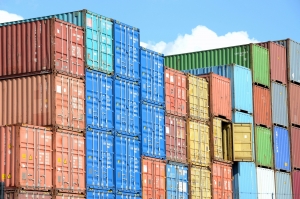The Impact of Covid-19 Delta Outbreak on NZ Companies in Level 3
The Impact of Covid-19 Delta Outbreak on Companies under Level 3 restrictions
Many small and medium businesses are in serious strife, some hanging on by a thread. Businesses are seeking certainty about how and when they can get back to business.
A recent MYOB survey has revealed confidence among small and medium businesses is plummeting and states SME revenue has taken its biggest hit since the 2008 global financial crisis.
The drop in revenue and profits smashed from the current Covid-19 lockdowns, staff retention and skill shortages, the supply chain crisis, surging house prices, rising interest rates, closed borders, climbing inflation and general consumer confidence are all impacting business and will continue to have an impact for the foreseeable future.
The government announced a comprehensive package which is a health-based approach on 22 October. This has provided some clarity and certainty and some financial relief. Increases in the resurgence package and wage subsidy scheme are welcomed though may be too late for some?
The government has confirmed more help for employers in the shortterm and a transition grant in the new framework to boost the “gear up” as businesses reopen in a traffic light framework. In the green framework, support payments will end. We expect to see a rise in insolvency appointments soon after.
Tourism/Accommodation Sector
The traffic light system may open the country up domestically but there is lack of clarity on when borders will reopen impacting the viability of many NZ businesses particularly in the accommodation and tourism sector.
The NZ Herald reported on 21 October that Auckland tourism employers were worried senseless as the Auckland lockdown would stretch close to three months. The article quotes a tourism provider ''In the tourism sector confidence is at an all time low. Businesses are reporting they're not even getting inquiries, let alone bookings, for the months ahead.''
The heat on companies particularly in the retail/travel/tourism/hospitality/aviation sectors is not currently being seen with a rise in companies facing liquidation. Instead many companies have closed waiting to reopen (but now may be revisiting that view?), some have ceased to trade, paid creditors and exited altogether. Many companies are holding out relying on business resurgence, the bank guarantee scheme and wage subsidies to keep their staff employed. It is unknown whether they will be as resilient as they were in 2020 and whether they will bounce back.
Debt Collection Actions
We are noticing increased attention from IRD for companies in Level 2 regions. It is recommended for any business struggling to meet tax arrears that negotiations are entered into now to avoid a potential winding up proceeding. They IRD are open to negotiation early on. Company directors that bury their heads in the sand and have no plans in place may face less leniency and liquidation proceedings in the future. There is a steady climb in IRD initiated appointments since 1 October 2021.
If you are facing a statutory demand gain some advice early. Ignoring a statutory demand will likely lead to the service of a winding up proceeding.
What should you be considering now?
- Consider the risks of trading insolvently and how directors can be held personally liable. For example, be careful to read the terms for applying for continued subsidies and resurgence.
- Negotiate an instalment plan with IRD for historic arrears and have a plan in place. The Inland Revenue have pressure to maximise the recovery for the Commissioner under the Tax Administration Act. They are willing to work with companies that communicate early on and this can save further interest/penalties.
- Assess the viability of the business and its future. What is the position when wages subsidies end? Prepare a cashflow forecast.
- Where cashflow is an issue, consider compromises with creditors leading to some debt forgiveness and time payment arrangements or voluntary administration.
- If the company has lost too much from the impact of Covid19 and the prospects are that the company has minimal ability to repay creditors nor has a financial source to fall back on to offer a better position than what liquidation holds, then liquidation sooner may be the better option. Continuing to trade with knowledge of insolvency is a risk for the directors.
We are here to help
Our team are happy to discuss the options available for struggling companies and how to manage personal guarantees and personal exposure. Contact This email address is being protected from spambots. You need JavaScript enabled to view it.
If your company needs some advice on the restructuring options or is likely facing the prospect of liquidation, we are happy to advise on the process and consequences.
We can also provide some advice on the options from The Regional Business Network, who may be able to assist with the funding of specific advice relating to business continuity and restructuring.
Insolvency by the Numbers: NZ Insolvency Statistics September 2021
Economic Rundown
Pressure and frustration continues to build for business owners and the wider economy; due to the lack of transparency, a proper plan in place as to when we may once again open up the country and what needs to be achieved to have these lockdown restrictions lifted.
We have now had our first full calendar month with Auckland and the surrounding regions at Alert Levels 3 & 4; while the rest of the country remains at Alert Level 2. The lockdown effects are being felt across the country, both financially and emotionally.
As we saw with the first round of lockdowns in 2020, lockdowns have a negative effect on insolvency figures, which have once again taken a sudden drop. Historically, we see a seasonal slowdown in insolvency figures over the Christmas period, so numbers may not see a recovery till 2022.
The factors affecting the NZ economy continue:
- Shipping delays and cost increases both international and domestic
- Supply shortages across several industries
- High consumer demand for goods
- Labour shortages
- Inflation higher than RBNZ’s targets leading to a lift in the OCR of 25 base points
- Continued quantitative easing and spending by governments propping up the economy
The August 2021 lockdown has introduced some additional uncertainty into the economy:
- Restrictions/Rules at each lockdown level continue to change from prior lockdowns
- Business’ that could previously open and trade at breakeven at level 2 have lost this option due to increased patronage restrictions of indoor spaces (hospitality, arts, tourism, venues)
- Central government support has been more targeted compared to previous lockdowns
Inflation figures released on 18 October 2021 for the quarter ended September show inflation of 2.2% in the quarter, putting yearly inflation at 4.9% driven largely by government spending and money printing. This will no doubt flow through into future OCR rises in attempts to curb the rise.
A quick side note we are seeing with October appointments is that IRD are now starting to apply pressure in those regions at level 2. Be sure to check back in for next months article for full details.
Company Insolvencies – Liquidations, Receiverships, and Voluntary Administrations
There has been a continued drop in appointments, as compared to the rest of 2021 and earlier years. Except for solvent liquidations when looking at the type of appointment, there is a drop. This is likely due to shareholders wanting to clear up their affairs in the lull created by lockdowns and the need to extract cash from the now dormant companies to meet other financial shortages. Traditionally, we see solvent liquidations peak in March, making up 20% of appointments in 2021. In September, solvent liquidations make up 25% of appointments.
With the Level 3 & 4 lockdown over parts of the North Island, the drop in appointments has not quite reached the lows seen following the late March 2020 full country lockdown. When September 2021 is compared with past year highs and averages, the drop off in appointments is noticeable.
Notable insolvency appointments in September:
- Allpress Expresso – The company has undergone a solvent liquidation following the sale of its business.
- Tai Ping Asian Supermarket (Beach Road)– Liquidators; then Receivers were appointed due to decreased patronage from overseas students.
- Cash Converters Onehunga; traded as an Onehunga based pawn broker. The Limited Partnership and Limited company have both been placed into liquidation by their shareholders.
- Ormiston Rise – The company was involved in the governments Kiwibuild projects, was placed into liquidation following its entry into Administration and Receivership earlier in the year.
Due to popular demand, I have taken the figures a step further and broken the appointment figures down by industry. Business operating in the construction industry and property development are currently making up 37% of total appointments. I expect to see Hospitality and Retail gaining a larger chunk of the pie in the coming months if the lockdown restrictions are not eased.
Personal Insolvencies – Bankruptcy, No Asset Procedure and Debt Repayment Orders.
The number of personal insolvencies has seen a drop to its lowest levels since pre 2018, with No Asset Procedures at an all time low. The plateau seen from April 2021 onwards, has now dropped off.
A common discussion I’ve had with colleagues, business owners and friends is around how insolvency figures can continue to track downwards when the country remains in lockdown, while business’ and individuals struggle to make ends meet. At this stage, it’s a wait and see approach for the future; coupled with guess’ as to how inflation will affect the economy and whether wages will track upwards to keep pace with it.
Winding Up Applications
The drop in Winding Up Applications, seen in the second half of August, has continued into September. The IRD have pulled back on enforcement action and provided business’ extra time and leniency to deal with arrears, while the country remains in lockdown. There has however been an increase in IRD activity in Level 2 locations.
We expect that this approach will continue from IRD until such time as the country is back at level 1, or until instructed otherwise by the government.
In addition to IRD stepping back their enforcement action, difficulities around serving documents on business’, court delays and the “be kind” mentality, have seen winding up applications continue to track down. As mentioned this will have a continued downward affect on creditor appointments in the coming months. Less winding up applications now, mean less liquidation appointments in the following months.
The below graph details how the numbers of advertised winding up applications, actually resulted in liquidation. While IRD was the only applicant with liquidations in September 2021, this is likely due to their need to chase every debt to the finale; they rarely write off unpaid debts.
If you want to have a chat about any points raised or an issue you may have you can DM me, call on 0800 30 30 34 or email This email address is being protected from spambots. You need JavaScript enabled to view it..
I am always available for a chat and am happy to help.
Insolvency By The Numbers: NZ Insolvency Statistics re August 2021
August 2021 has been a story of two halves. Between 1 and 17 August 2021, the outlook for economic growth was continuing to look positive. On 17 August 2021, the government called a press conference and, at 6:00 pm that evening, Jacinda Ardern told New Zealand that the country would be moving to alert Level 4 from 11:59 om that night. From 18 August 2021, most businesses were again forced to shut their premises as we returned to Level 4 lockdown and our home bubbles. Those of us that could, readjusted to working from home but Level 4 left many businesses unable to operate. The short notice also meant that many businesses – including those in hospitality, agriculture (who do not supply to the supermarkets), and floriculture – suffered huge losses of product as a result of the lockdown announcement.
Since the COVID-19 pandemic began, at least part of New Zealand has been in an Alert Level 3 or Level 4 lockdown for a total of 91 days to the end of August 2021. All of September and at least part of October will add to this total.
According to Statistics New Zealand, electronic card transactions in August 2021 was $6.433 billion, down $1.257 billion when compared to July 2021. Spending on consumables was up by $216 million but spending in all other categories were down:
The increase in the OCR that was being anticipated in the first half of August 2021 did not eventuate at the 18 August 2021 OCR announcement, a decision made off the back of the just re-introduced Level 4 lockdown. The Reserve Bank confirmed that the OCR is below the neutral interest rate, estimated to be around 2 percent, and said that its economic projections imply OCR increases are coming. The language used at the OCR review in August 2021 strongly suggested that the OCR could increase as early as 6 October 2021, when the OCR is next reviewed. We will know shortly whether the Level 4 and Level 3 lockdowns, especially in Auckland, have caused further delays to the anticipated OCR increases. Further increases to mortgage lending rates by the banks in September 2021 indicate that expect the answer to be no.
If you want to have a free chat about any issues your business is experiencing or about any other insolvency matter, contact us on 0800 30 30 34 or email This email address is being protected from spambots. You need JavaScript enabled to view it..
Company Insolvencies – Liquidations, Receiverships, and Voluntary Administrations
In August 2021, New Zealand spent 14 days in Alert Level 3 or higher. While the total number of corporate insolvency appointments in August was only down by 11.4 percent when compared to July 2021, the appointments over the lockdown period account for just 29.5 percent of the month’s total appointments.
There were four receiverships in August 2021, all of which started before the country went into Alert Level 4 lockdown. Four companies that entered voluntary administration earlier this year were put into liquidation at their watershed meetings this month. Of the two voluntary administrations in August 2021, one of the companies is now in liquidation and in receivership and the other has not yet reported on the outcome of its watershed meeting.
If the country had not gone into lockdown in the middle of August 2021, we expect that the appointment numbers would have been closer to the August 2019 (149) and August 2020 (154) appointments and the year to date appointments would have continued to approach the level of appointments in the year to date in 2019 and 2020.
Notable insolvency appointments in August:
- Three of the Sacred Hill Vineyard entities have been placed into liquidation. These companies have been in receivership since May 2021.
- WNMC Limited (Wellington Night Market Cuba) is no longer trading and has been put into liquidation.
- Diners Club (NZ) Limited, who used to provide credit card services through The Warehouse, is going through a solvent liquidation.
Personal Insolvencies - Bankruptcy
The personal insolvency numbers have been fairly consistent since April 2021. The number of bankruptcies in August 2021 were lower than in July but the number of Debt Repayment Orders was higher.
As the cost of living continues to increase and businesses are put under more pressure, we expect that there will be more payment defaults and demands made on guarantors. Personal insolvencies are likely to increase as a result.
Winding Up Applications
The number of liquidation applications was the lowest year to date in August 2021, with only 41 advertisements appearing. By way of comparison, there were 75 advertisements in July 2021 and 83 advertisements in June 2021. The IRD advertised half as many applications in August 2021 as it did in July 2021.
We expect that the inability to serve documents at Alert Level 4 has affected the August advertising figures. The extension of Alert Level 4 into September and Alert Level 3 into October 2021, together with the IRD and many other businesses putting debt enforcement on hold while businesses are affected by lockdowns, will mean that advertising of winding up applications will be affected by the lockdowns for some time.
Many businesses are suffering from lower turnover because of lockdown why still incurring fixed overheads and operating expenses, which means many businesses have been operating at a loss for some time now. A number of Auckland retail businesses also lost out on potential sales when Auckland was in Alert Level 4 so could not operate but the rest of New Zealand was at Alert Level 2 and able to dispatch goods to Auckland customers.
While everyone understands that most businesses are doing it tough, the situation is precarious. For every business that closes its doors, employees will lose their jobs. While a company’s suppliers may be able to provide some breathing space in the short term in the hopes that the business’ cash flow will recover, that supplier will also have to deal with its own creditors. To date, we have not seen very many iconic businesses fail in New Zealand as a result of COVID-19.
When Mainzeal collapsed, there was a domino effect through the market, the effects of which are still at play. It remains to be seen whether, when (or if) the first large New Zealand business fails because of the COVID-19 pandemic, the house of cards will come tumbling down.
Contingent Liabilities
When a company is placed into liquidation, one of the first actions of the liquidators is to give public notice of their appointment in the New Zealand Gazette, and an appropriate newspaper, and to invite creditors to file their claims.
The vast majority of claims received will relate to specific amounts that are owed because invoices for goods or services haven’t been paid when due or loan repayment obligations haven’t been met. There is, however, the ability for claims to be filed for contingent debts.
WHAT IS A CONTINGENT CLAIM?
In the circumstances of a liquidation, a contingent claim relates to a debt that will be owed by the company in liquidation only if certain circumstances occur. This could include the company being found liable for damages in a Court case or a warranty being called up for a defective product.
Contingent claims are, pursuant to section 303 of the Companies Act 1993 (“the Act’), able to be admitted as a claim in a liquidation –
303 Admissible claims
(1) Subject to subsection (2), a debt or liability, present or future, certain or contingent, whether it is an ascertained debt or a liability for damages, may be admitted as a claim against a company in liquidation.
If a claim is received for a contingent amount, and the liquidators have funds to be distributed, then the liquidators need to establish the liquidated value of that claim. Section 307 of the Act sets out the requirements.
307 Claim not of an ascertained amount
(1) If a claim is subject to a contingency, or is for damages, or, if for some other reason, the amount of the claim is not certain, the liquidator may—
(a) Make an estimate of the amount of the claim; or
(b) refer the matter to the court for a decision on the amount of the claim.
(2) On the application of the liquidator, or of a claimant who is aggrieved by an estimate made by the liquidator, the court shall determine the amount of the claim as it sees fit.
SOLVENCY TEST:
Contingent liabilities can also come into calculations when looking at the solvency of a company. Section 4 of the Act sets out the meaning of the term solvency test.
4 Meaning of solvency test
(1) For the purposes of this Act, a company satisfies the solvency test if—
(a) the company is able to pay its debts as they become due in the normal course of business; and
(b) the value of the company’s assets is greater than the value of its liabilities, including contingent liabilities.
The solvency test is important in circumstances where the directors of a company are making decisions about major transactions or are considering paying dividends to shareholders. To pass the solvency test, a company must satisfy both criteria – be able to pay debts as they become due, and the value of its assets must be greater than its liabilities.
CONTINGENT DEBTS IN LIQUIDATIONS:
Failure to properly assess the solvency of a company before making a distribution to shareholders could lead, in the event of a liquidation, to the liquidator clawing back the dividend or to the directors being personally liable for any amounts unable to be recovered from the shareholders.
Contingent liabilities can also become relevant in another aspect of liquidations, as shown in the Supreme Court judgment in David Browne Contractors Ltd v Petterson [2017] NZSC 116. In this case, the liquidator was seeking to claw back payments made to creditors, pursuant to section 292(2)(a) of the Act, on the basis that the company in liquidation had been unable to pay its due debts at the time the payments to the creditors were made.
Included in the “due debts” being relied on was a contingent amount that the company in liquidation faced in a claim for damages for faulty work carried out for a client.
The Supreme Court found that future debts should also be taken into account if there is sufficient certainty the claim will crystallise and they are “reasonably temporally proximate” and, at paragraph [91] of the judgment, states:
Solvency in a cash flow sense must be assessed objectively, taking a practical business prospective. What is reasonably temporally proximate will, as indicated above, fall to be considered in light of the facts of the particular case. If a reasonable and prudent business person would be satisfied that there is sufficient certainty that a contingent debt will, within that relevant period, become legally due then it must be taken into account.
Conclusion:
Generally speaking, contingent liabilities will not be recorded on a company’s balance sheet but will be referred to in the Notes accompanying the financial reports. However, there may be occasions, when they will need to be taken into account when assessing the company’s cashflow solvency.
If you would like more information in relation to contingent liabilities and the solvency tests, please contact one of the team at McDonald Vague.
Colin Sanderson




